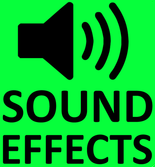Own Your Markets
With the PWHL visiting St. Louis today as part of the season-long takeover tour, it's time to have a serious discussion about why this entire experiment has artificially boosted the PWHL's numbers and why that's bad for business. In the short term, there aren't a lot of negatives as the extra money generated at each of these stops helps the league conduct its business. However, the longer term problems don't disappear when one looks at the concerning numbers shown at the six arenas they're contracted to occupy. It's time to take a serious look at the direction of this league when it comes to butts in seats.
It's encouraging to see that 182,188 fans showed up for the fourteen games that weren't played in the six home arenas that the PWHL normally plays in, but that total represents 31.93% of the total attendance to date that the PWHL has attracted. There will be people who complain that I've included Agganis Arena in Boston, Canadian Tire Centre in Ottawa, and Scotiabank Arena in Toronto, but those are technically neutral-site arenas since the Fleet, the Charge, and the Sceptres don't call those arenas "home" this season.
The catch here is that Boston has now played two games at Agganis Arena at Boston University, and they're doing better than what is being seen at the Tsongas Centre in Lowell. In those two games at the Terriers' home rink, the Fleet have played in front of 11,996 fans compared to 33,190 fans in eight games at Tsongas Center. The average for those two games is higher than what we're seeing at Tsongas Center, but the Agganis Arena is also far closer to downtown Boston than the Tsongas Center is.
That's not to say the Fleet can't be successful in Lowell, but they're a considerable distance from most of Boston. They still play to 64% of capacity of Tsongas Center and they average 4149 fans this season, but that total is 8.55% of the total attendance without the neutral-site arenas and just 5.82% of the total attendance this season. Those numbers simply don't work when looking at the Tsongas Center, but averaging 6000 fans at the Agganis Arena would. If the PWHL is going to be run like a business, location matters!
Of course, there can be no crossover between PWHL and NCAA players when it comes to playing at Agganis Arena due to the NCAA's rules, so any discussion of moving to Agganis Arena would require significant coordination. However, the numbers don't lie when it comes to the fans the Fleet attract when playing near the downtown area of Boston, and this is why they should be looking for an arena that moves them closer to all areas of the Boston metropolis.
The same problem exists just south of Boston as well as the New York Sirens are playing in front of the sparsest crowds in the circuit despite playing in the largest market. The Prudential Center in Newark, New Jersey is nowhere near most of New York City, and that has negatively affected the attendance seen at Sirens games. To date, the Sirens have played twelve games at home with only 33,196 fans paying to get into the arena. That's an average of 2766 fans per game, and it represents 8.55% of the total attendance without the neutral-site arenas and 5.82% of the total attendance this season.
If you're wondering, the Sirens have attracted six more fans than the Fleet have this season despite playing four more games in their home arena. My math might be a little rusty, but that's not good.
The problem with the Sirens is that they didn't work on Long Island or Connecticut in Season One, and they aren't working in Newark in Season Two. Add in the fact that the city of New York doesn't have a university team outside of Long Island, and it seems pretty clear that the New York metropolis may not be a women's hockey hotbed despite the size of the market. There will be many who will make the case that it can be, but the numbers don't lie: the Sirens have not made an impact in that market in two seasons of hockey.
Let me be clear: this isn't to say that New York won't be a hockey hotbed for the women's game, but we should be looking at hockey history when it comes to the New York market. The NHL didn't have a US market until 1925 when the Boston Bruins joined the league, and the following season saw the New York Americans join the NHL. 1926-27 saw the New York Rangers join the league as the second New-York-based team, but it took nine years for the NHL's creation to reach and remain in New York with one of their oldest teams.
The other thing to remember is that the NHL had teams in Hamilton, Ottawa, Pittsburgh, St. Louis, and second teams in both Montreal and New York long before they reduced the number to the six teams that solidified the NHL's hold as the top professional league in North America. They have had franchises fail in cities where they currently play, and they've gone back to those cities when they've shown they have proper ownership, a viable market, and a suitable arena.
Moving a team that isn't hitting critical benchmark numbers does not mean the PWHL has failed; rather, it should about moving a team to ensure greater overall stability for the league. As it stands, moving the Fleet to a better-located arena and moving the Sirens to a better women's hockey market would undoubtedly strengthen this league.
This is why any talk of expansion by the PWHL is ludicrous at this point. There are two teams who may not hit the required 17% of total attendance to ensure each team are contributing equally to the total attendance, and I'm fairly sure that adding teams and games to the schedule will do nothing to improve those numbers. If both the Fleet and Sirens were averaging 6000 fans per game, I wouldn't even be writing this article, but the reality is that location matters when it comes to getting the attendance numbers these teams need. In Boston's care, a better arena location to play to draw fans, and, in New York's case, a better market in which they can draw fans.
No one wants to see the PWHL fail, and the league can thrive if they can find six markets where a minimum of 6000 fans show up on average for each game. Toronto and Montreal are locks as they're pulling in 23.3% and 23.5% of the total attendance in their home rinks this season. Ottawa and Minnesota are doing their parts at 18.4% and 17.7%, so they're having moderate success. Boston could find success if they played at a rink like Agganis Arena more often, and New York might just need to find a new market.
While expansion is important to grow this league nationally, they need to be successful in the markets they currently occupy first. The league can beat the drum about how they pulled in more fans this season than the AHL and the ECHL, but let's not forget that the PWHL pushed 182,188 fans through turnstiles in NHL and NCAA rinks. The Sirens only outdrew two AHL teams and three ECHL teams, and the Fleet outdrew nine AHL and ten ECHL teams. Moving the goalposts helps no one, and the PWHL would be wise to stop these meaningless comparisons to men's hockey when promoting their own brands.
The PWHL is only as strong as their weakest market just like the NHL is only as strong as its weakest market. With only six teams, the margin for error is much smaller when it comes to being profitable, so the ensuring six strong, profitable markets should be the first point of order for the PWHL. Much like the NHL did, resisting the impulses to expand will be tough, but it will ensure long-term success before the next two, four, or six teams can be established.
As a fan of women's hockey, the last thing that I want to see is another failure of a league because of money problems. I know the Mark Walter Group has a lot of money behind it, but that group isn't in business to lose money with the PWHL. The league can pat itself on the back all it wants when it comes to having 188,122 people show up in arenas the league doesn't call home, but having Boston and New York as viable PWHL markets would give those Takeover Tour numbers a lot more credibility when it comes to expansion talk.
People can lament not having enough roster spots for all the talent seen in women's hockey today, but this is the same problem that the NHL faced when it was limited to six teams. What that allowed was for the best players to establish the NHL as the top league without question, and that supremacy enabled the NHL's six teams to become successful and profitable in the markets they called home. Expansion in the PWHL will happen, but it shouldn't be an option before the PWHL finds longer-term success with its original six teams in markets that will support its product day-in and day-out.
Making history for the PWHL isn't hard when it comes to what's seen on the ice. Making history off the ice when it comes to profitability and long-term success is where they should be aiming for new heights because the PWHL faces the same problems as every other professional women's league that came before them: can they generate enough money to turn a net profit for all their teams?
With each team averaging $55,000 USD per player, 24 players will cost around $1.3 million in salaries alone. 6000 fans per game for 15 games is 90,000 fans per team total, and a $30 average ticket price means that the PWHL generates $2.7 million per team. That number would almost certainly guarantee that teams are profitable when one accounts for merchandise sales and sponsorship dollars, and it's all about growing whatever the net profit is per team after all the expenses are paid. That's why having Boston and New York playing in front of less 5000 fans in their home arenas isn't good for anyone.
You'll hear fans and see journalists trot out numbers like "record crowd in Detroit" and "more than 18,000 fans in Vancouver", but I cannot stress that playing one game in those cities on a specific date that everyone circles on their calendar is far different than having fifteen games on different nights of the week throughout the winter. The University of Nebraska isn't moving their volleyball team outdoors after 92,003 fans showed up to cheer the women on against Omaha at Memorial Stadium, so basing expansion on one day's attendance is a futile effort. The PWHL should know this. And likely does.
Is interest high for the PWHL in other cities? Yes, and it was for the NHL too. But the difference here is that the NHL owned their markets in those original six cities so that there was zero risk of those teams struggling once expansion happened. Those six teams provided the NHL with a rock-solid footing as a professional sports league, and the PWHL should be doing the same with their six teams.
You have to walk before you can run. Expanding in the third season of existing is a good way to have more than just two struggling markets which will only put further strain on the league, and no one wants that. Own your markets, PWHL, and then the discussion about expansion can begin. Gambling with the livelihoods of these women is not something the league should be doing.
Until next time, keep your sticks on the ice!
It's encouraging to see that 182,188 fans showed up for the fourteen games that weren't played in the six home arenas that the PWHL normally plays in, but that total represents 31.93% of the total attendance to date that the PWHL has attracted. There will be people who complain that I've included Agganis Arena in Boston, Canadian Tire Centre in Ottawa, and Scotiabank Arena in Toronto, but those are technically neutral-site arenas since the Fleet, the Charge, and the Sceptres don't call those arenas "home" this season.
The catch here is that Boston has now played two games at Agganis Arena at Boston University, and they're doing better than what is being seen at the Tsongas Centre in Lowell. In those two games at the Terriers' home rink, the Fleet have played in front of 11,996 fans compared to 33,190 fans in eight games at Tsongas Center. The average for those two games is higher than what we're seeing at Tsongas Center, but the Agganis Arena is also far closer to downtown Boston than the Tsongas Center is.
That's not to say the Fleet can't be successful in Lowell, but they're a considerable distance from most of Boston. They still play to 64% of capacity of Tsongas Center and they average 4149 fans this season, but that total is 8.55% of the total attendance without the neutral-site arenas and just 5.82% of the total attendance this season. Those numbers simply don't work when looking at the Tsongas Center, but averaging 6000 fans at the Agganis Arena would. If the PWHL is going to be run like a business, location matters!
Of course, there can be no crossover between PWHL and NCAA players when it comes to playing at Agganis Arena due to the NCAA's rules, so any discussion of moving to Agganis Arena would require significant coordination. However, the numbers don't lie when it comes to the fans the Fleet attract when playing near the downtown area of Boston, and this is why they should be looking for an arena that moves them closer to all areas of the Boston metropolis.
The same problem exists just south of Boston as well as the New York Sirens are playing in front of the sparsest crowds in the circuit despite playing in the largest market. The Prudential Center in Newark, New Jersey is nowhere near most of New York City, and that has negatively affected the attendance seen at Sirens games. To date, the Sirens have played twelve games at home with only 33,196 fans paying to get into the arena. That's an average of 2766 fans per game, and it represents 8.55% of the total attendance without the neutral-site arenas and 5.82% of the total attendance this season.
If you're wondering, the Sirens have attracted six more fans than the Fleet have this season despite playing four more games in their home arena. My math might be a little rusty, but that's not good.
The problem with the Sirens is that they didn't work on Long Island or Connecticut in Season One, and they aren't working in Newark in Season Two. Add in the fact that the city of New York doesn't have a university team outside of Long Island, and it seems pretty clear that the New York metropolis may not be a women's hockey hotbed despite the size of the market. There will be many who will make the case that it can be, but the numbers don't lie: the Sirens have not made an impact in that market in two seasons of hockey.
Let me be clear: this isn't to say that New York won't be a hockey hotbed for the women's game, but we should be looking at hockey history when it comes to the New York market. The NHL didn't have a US market until 1925 when the Boston Bruins joined the league, and the following season saw the New York Americans join the NHL. 1926-27 saw the New York Rangers join the league as the second New-York-based team, but it took nine years for the NHL's creation to reach and remain in New York with one of their oldest teams.
The other thing to remember is that the NHL had teams in Hamilton, Ottawa, Pittsburgh, St. Louis, and second teams in both Montreal and New York long before they reduced the number to the six teams that solidified the NHL's hold as the top professional league in North America. They have had franchises fail in cities where they currently play, and they've gone back to those cities when they've shown they have proper ownership, a viable market, and a suitable arena.
Moving a team that isn't hitting critical benchmark numbers does not mean the PWHL has failed; rather, it should about moving a team to ensure greater overall stability for the league. As it stands, moving the Fleet to a better-located arena and moving the Sirens to a better women's hockey market would undoubtedly strengthen this league.
This is why any talk of expansion by the PWHL is ludicrous at this point. There are two teams who may not hit the required 17% of total attendance to ensure each team are contributing equally to the total attendance, and I'm fairly sure that adding teams and games to the schedule will do nothing to improve those numbers. If both the Fleet and Sirens were averaging 6000 fans per game, I wouldn't even be writing this article, but the reality is that location matters when it comes to getting the attendance numbers these teams need. In Boston's care, a better arena location to play to draw fans, and, in New York's case, a better market in which they can draw fans.
No one wants to see the PWHL fail, and the league can thrive if they can find six markets where a minimum of 6000 fans show up on average for each game. Toronto and Montreal are locks as they're pulling in 23.3% and 23.5% of the total attendance in their home rinks this season. Ottawa and Minnesota are doing their parts at 18.4% and 17.7%, so they're having moderate success. Boston could find success if they played at a rink like Agganis Arena more often, and New York might just need to find a new market.
While expansion is important to grow this league nationally, they need to be successful in the markets they currently occupy first. The league can beat the drum about how they pulled in more fans this season than the AHL and the ECHL, but let's not forget that the PWHL pushed 182,188 fans through turnstiles in NHL and NCAA rinks. The Sirens only outdrew two AHL teams and three ECHL teams, and the Fleet outdrew nine AHL and ten ECHL teams. Moving the goalposts helps no one, and the PWHL would be wise to stop these meaningless comparisons to men's hockey when promoting their own brands.
The PWHL is only as strong as their weakest market just like the NHL is only as strong as its weakest market. With only six teams, the margin for error is much smaller when it comes to being profitable, so the ensuring six strong, profitable markets should be the first point of order for the PWHL. Much like the NHL did, resisting the impulses to expand will be tough, but it will ensure long-term success before the next two, four, or six teams can be established.
As a fan of women's hockey, the last thing that I want to see is another failure of a league because of money problems. I know the Mark Walter Group has a lot of money behind it, but that group isn't in business to lose money with the PWHL. The league can pat itself on the back all it wants when it comes to having 188,122 people show up in arenas the league doesn't call home, but having Boston and New York as viable PWHL markets would give those Takeover Tour numbers a lot more credibility when it comes to expansion talk.
People can lament not having enough roster spots for all the talent seen in women's hockey today, but this is the same problem that the NHL faced when it was limited to six teams. What that allowed was for the best players to establish the NHL as the top league without question, and that supremacy enabled the NHL's six teams to become successful and profitable in the markets they called home. Expansion in the PWHL will happen, but it shouldn't be an option before the PWHL finds longer-term success with its original six teams in markets that will support its product day-in and day-out.
Making history for the PWHL isn't hard when it comes to what's seen on the ice. Making history off the ice when it comes to profitability and long-term success is where they should be aiming for new heights because the PWHL faces the same problems as every other professional women's league that came before them: can they generate enough money to turn a net profit for all their teams?
With each team averaging $55,000 USD per player, 24 players will cost around $1.3 million in salaries alone. 6000 fans per game for 15 games is 90,000 fans per team total, and a $30 average ticket price means that the PWHL generates $2.7 million per team. That number would almost certainly guarantee that teams are profitable when one accounts for merchandise sales and sponsorship dollars, and it's all about growing whatever the net profit is per team after all the expenses are paid. That's why having Boston and New York playing in front of less 5000 fans in their home arenas isn't good for anyone.
You'll hear fans and see journalists trot out numbers like "record crowd in Detroit" and "more than 18,000 fans in Vancouver", but I cannot stress that playing one game in those cities on a specific date that everyone circles on their calendar is far different than having fifteen games on different nights of the week throughout the winter. The University of Nebraska isn't moving their volleyball team outdoors after 92,003 fans showed up to cheer the women on against Omaha at Memorial Stadium, so basing expansion on one day's attendance is a futile effort. The PWHL should know this. And likely does.
Is interest high for the PWHL in other cities? Yes, and it was for the NHL too. But the difference here is that the NHL owned their markets in those original six cities so that there was zero risk of those teams struggling once expansion happened. Those six teams provided the NHL with a rock-solid footing as a professional sports league, and the PWHL should be doing the same with their six teams.
You have to walk before you can run. Expanding in the third season of existing is a good way to have more than just two struggling markets which will only put further strain on the league, and no one wants that. Own your markets, PWHL, and then the discussion about expansion can begin. Gambling with the livelihoods of these women is not something the league should be doing.
Until next time, keep your sticks on the ice!











No comments:
Post a Comment